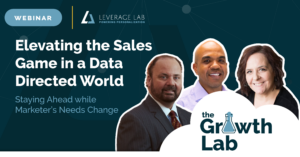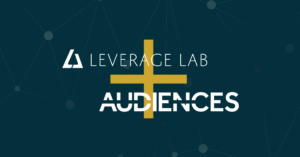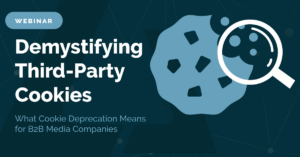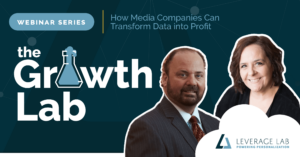This article was written by Leverage Lab CEO, AnnMarie Wills and originally appeared in Publishing Executive on 4/2/2018 – access it here.
Over the past few days, Facebook announced two significant changes positioned as privacy-enhancing moves. One of those changes went under the radar, but the other change has some people steaming mad, some stock prices plunging and most people asking the question “what does this mean for me?” For media and publishing companies, this shift will create opportunities for those with a strong first-party data strategy. First, let’s examine the two significant changes Facebook made last week.
Facebook Bans Third-Party Data & Pauses App Review
Facebook quietly announced to the developer community that it would pause app review, the process third-party developers use to submit their apps for Facebook approval. In light of the Cambridge Analytica scandal involving data derived from third-party apps, this seems like a reasonable step to take. Positioned as a privacy initiative, Facebook provides no further guidance around the length of the pause or how it will change the platform for third-party app developers.
The second announcement was the opposite of quiet, creating angst, concern and confusion among marketers. Facebook said it will shut down Partner Categories, a section within Facebook’s advertiser tools, allowing third-party data brokers (like Acxiom and Experian) to sell targeting data on a wide variety of predominantly consumer purchase topics.
Simply put, Facebook will no longer allow third-party aggregators to match data against Facebook’s audience and then sell that behavior for targeting purposes — at least not on their platform. Facebook hasn’t (yet) stated that it will prohibit marketers from purchasing that targeting data outside of the platform.
The two methods of targeting Facebook still offers are first- and second-party data-centric. Facebook will still allow a marketer to target based on the second-party data it excels at collecting (page likes, interests, etc.). Facebook will also continue to allow marketers to use their own first-party data. Using their first-party customer data, marketers can still match to the Facebook audience and execute advertising.
The angst around Facebook’s ban of third-party data matching is primarily among brand marketers and the agencies who serve them. Agencies and brand marketers have notoriously relied on third parties for data about their own customers. Understandably, it’s difficult to create a direct first-party data relationship with customers who buy your products through a channel. Third-party targeting data is robust, relatively cheap to use and if it’s available in your favorite channels — all the better! While the quality of third-party data has always been debated (find out for yourself by checking your Acxiom profile at www.aboutthedata.com), it’s proven to be a financially advantageous method for brand marketers to “target customers.”
As expected, some of the angst comes from the third-party data brokers themselves. After the announcement on March 28, Acxiom’s stock dropped 30%, at one point but has stabilized at -19% at the time of this writing. Acxiom has stated that this change could pull $25 million in profits and revenue from 2019 guidance. The LiveRamp product from Acxiom, which allows marketers to match their own first-party data against a vast anonymous digital identity cloud is not impacted at all by this change and Acxiom’s 2019 guidance will continue to show 30% growth.
Both marketers and data brokers are likely steaming because this is a signal from Facebook that it may become even more of a “walled garden.” At the end of the day, with 2.3 billion monthly users, Facebook is an ad platform behemoth. Although Facebook’s reputation has suffered among the public, the company may be betting it can ride it out and come through with relatively the same critical mass. The two methods of ad targeting the social platform maintains are both wholly dependent on the data Facebook collects. Facebook may have needed the targeting options that third-party data brokers provided at one point, but those relationships may do more harm than good today.
Facebook is clearly aligned around the value and power of its first-party data. By eliminating the impact of third-party data brokers or third-party data collectors, they squarely emphasize the one thing they can control: the data they gain from their users and how that data is activated. Media and publishing executives should be asking themselves some hard questions along the same lines.
1. What is my first-party data strategy?
The data you collect on your users and subscribers is your biggest asset. Do you have a strategy to create value from your data collection efforts? What you know about your users and subscribers is the key to creating meaningful interactions for your advertisers, and value for you. Whether you are B2B or B2C your first-party data should be working hard for you. Create a definitive plan for the growth and maintenance of your first-party data to extract every bit of value.
2. Am I getting enough value from my first-party data?
Brand marketers and agencies are the most upset by the third-party ban because the easy, efficient targeting data piped into Facebook via third parties had significant value for them. For the brand marketer and agency, first-party data collection and competency just “isn’t their thing.”
Very often first-party data among media and publishing companies are synonymous with demand generation programs. How scarce is the data in your user marketplace? How hard is it to find targeting data for your marketers? If targeting data in your industry is hard to come by, you may want to evaluate your demand generation programs and make sure you are appropriately priced. Similarly, if you are not using your first-party data for off-site ad targeting you are not fully leveraging the value of your data. Remember that Facebook still allows you to BYOD (bring your own data) to their platform and target users on behalf of marketers.
3. Am I doing anything that detracts from the value of my first-party data?
As Facebook has signalled, mixing your first-party data with questionable third-party sources may do more harm than good. Think long and hard about the impact of mixing and mingling with other data sources. The benefits may not outweigh the risks.
Whether it’s first-party, second-party or third-party, data is where an organization can truly differentiate itself. As GDPR and privacy concerns step to the forefront, the need for data competency, data strategy and appropriate empowering technologies has never been greater. It’s critical to be educated and learn from the leaders in our ecosystem and industry.



